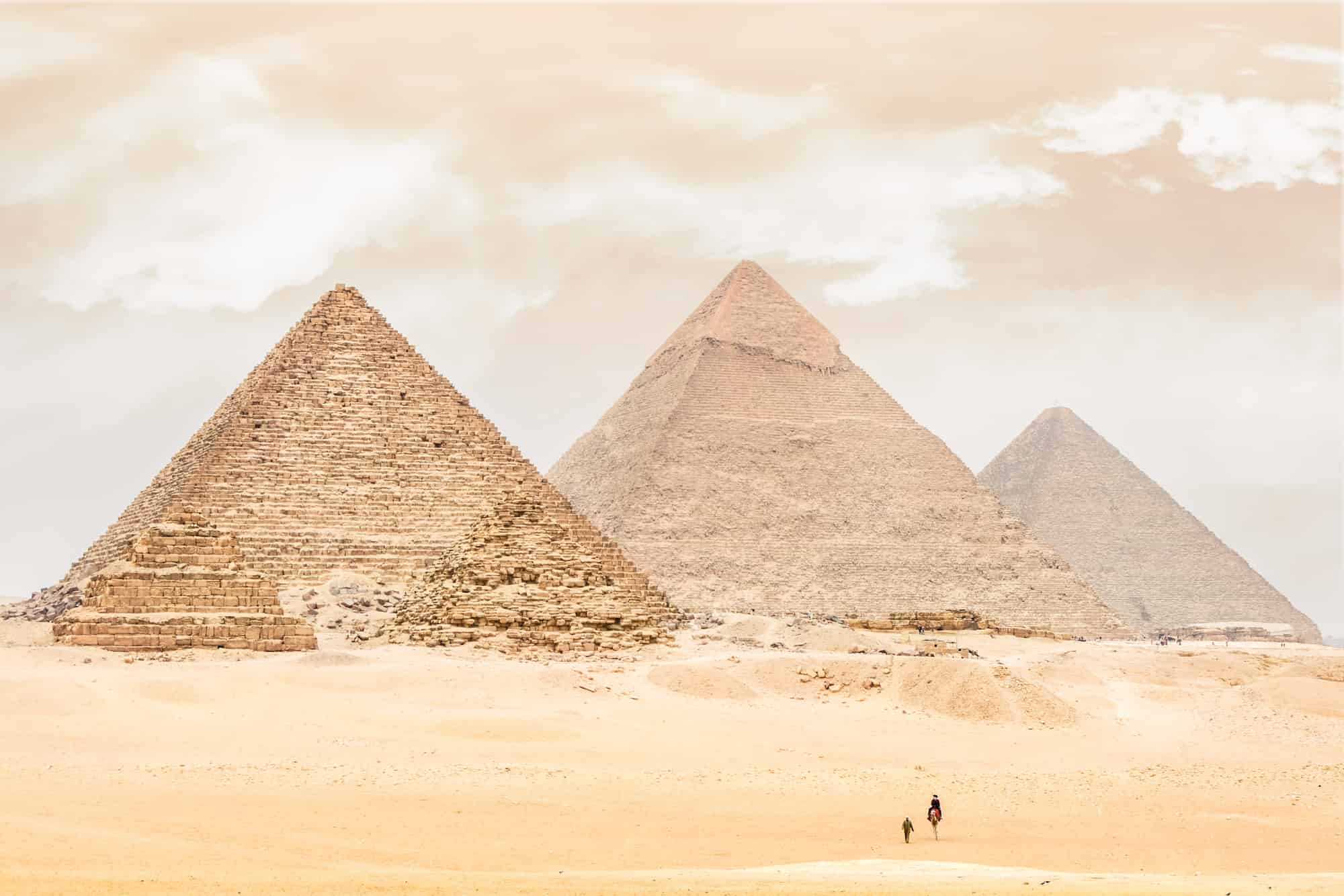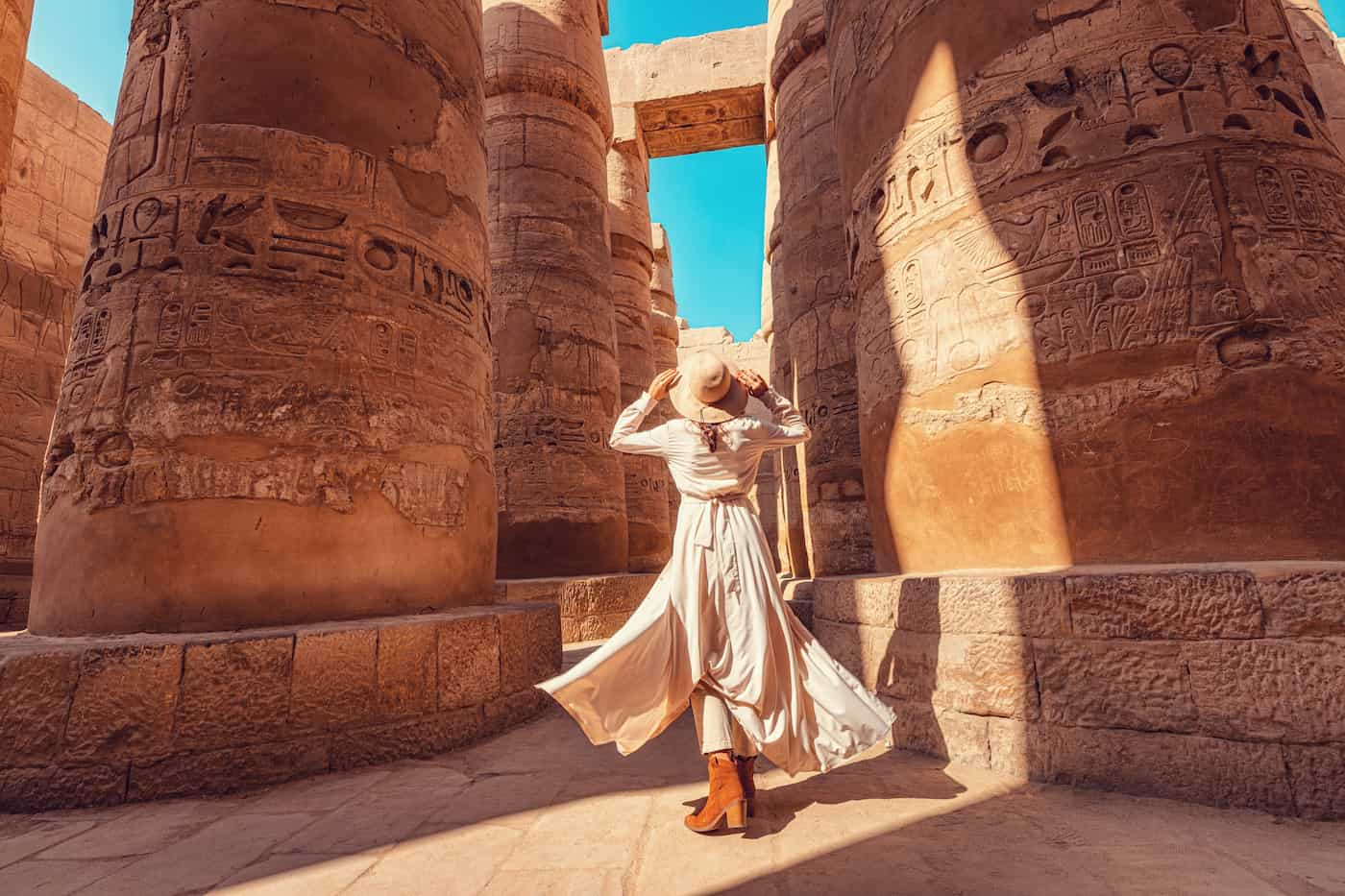Introduction: Why Size Still Matters When It Comes to Pyramids
The oldest and best-known pyramids are human-made structures. You will see them in the deserts of Egypt, somewhere in the Central American jungles, and now around the banks of the Mississippi River in Memphis, Tennessee. But which is the world’s largest pyramid?
It depends on the method of measurement. Some pyramids have greater height; others have greater width. Others reach deep into the ground with layers of buried chambers. So this guide places the pyramids of the world in a ranking of largeness by height and volumetric capacity, so one can never miss an ancient or modern structure from consideration for the listing.
In Egypt, the Great Pyramid of Giza stands as the greatest pyramid with the greatest tallness. But it is certainly not the largest in volume. That distinction goes to the Great Pyramid of Cholula, in Mexico, a temple area that encompasses a wider area than what we think of as a monument; it genuinely looks more like a hill. Then, of course, there is the Memphis Pyramid and the one with the Bass Pro Shops inside, named the ninth-tallest pyramid in the world.
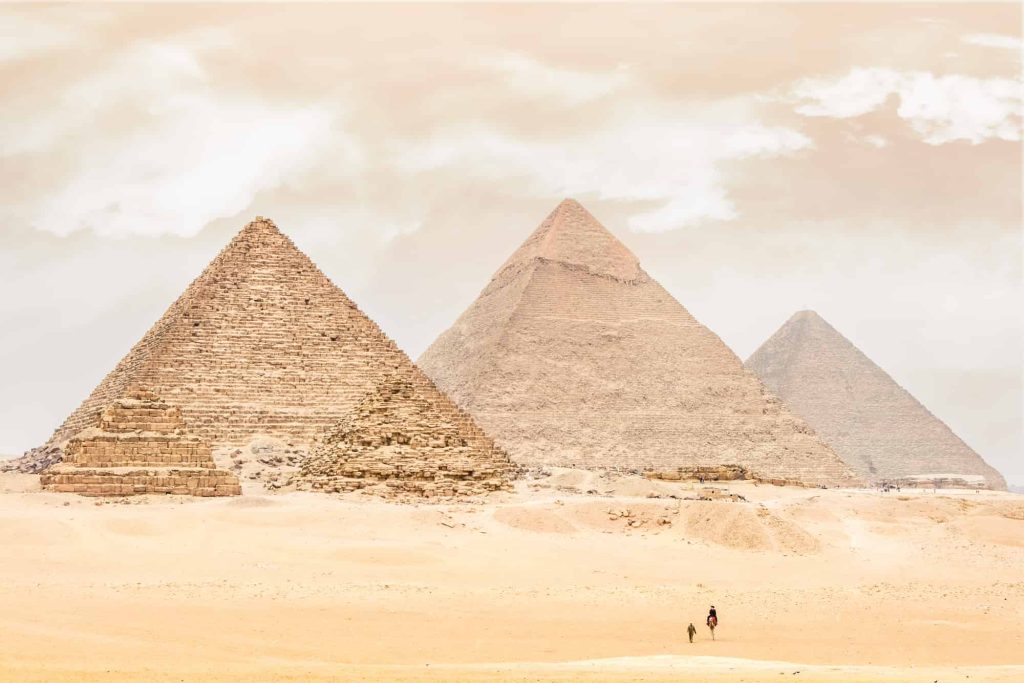
Largest Pyramids in the World
This list takes in ancient wonders such as the oldest pyramid in the world, modern landmarks such as the largest pyramids in the world, Bass Pro, and giant quarried stones half-buried by time. It is a global tour of stone, earth, and steel, designed to catch seasoned history buffs off guard.
Let’s look into the comparison of all these massive structures and what makes each one individually unforgettable.
Volume vs. Height: How to Measure the Largest Pyramids in the World
Often, whenever one is startled by the biggest pyramid in the world, there comes an inevitable question of which pyramid is bigger than all others and which can be the king of all pyramids. No one pyramid in the world is the biggest. To determine the largest pyramid, one has to consider the sizes.
Height and volume are the two distinct methods of assessing the size of the pyramids. These are two different things.
Egyptians built the Pyramids, but they assessed them in different ways.
The main way to measure the size of pyramids is by using apex heights, although this is not the only way.
Height: The Traditional Measure
If the height is the measure, the crown of the tallest ancient structures belongs to the Great Pyramid of Giza in Egypt. Pharaoh Khufu had it constructed around 2560 BCE, and its initial height was tall of 481 feet (146.6 meters). The influence over the years on the tall structure, especially erosion and the outer casing stripping, has brought the height of the tall structure down to approximately 455 feet (138.5 meters) at present.
In height only, it remains the tallest ancient pyramid in the world. However, this is not the case in the present ranking. Take, for instance, the Memphis Pyramid in Tennessee, which is also the Bass Pro Shops Pyramid today. The structure rises up to 321 feet (98 meters) tall. Nonetheless, in terms of height ranking of pyramids, that is one of the tallest modern ones.
Volume: The Hidden Giant
Pyramids are known to be tall but not big; in fact, this is not true. Concerning pyramids, Egypt does not have the biggest one; in fact, Mexico has it.
The Tlachihualtepetl, also known as the Great Pyramid of Cholula, situated in Puebla of the country Mexico, has approximately 4.45 million cubic meters of material. For comparison, the volume of the Great Pyramid of Giza seems small as its value is approximately 2.5 million cubic meters. Cholula is a hill, completely vegetation with a church on the hilltop, when viewed from afar. This is because the pyramid was constructed over several ages in different steps, and later became a jungle. Nevertheless, submerged within the hill is the largest pyramid in the world.
This is because most people believe it must be Egypt that has the largest structure. Truthfully, other ancient cultures also built pyramids, very large pyramids, and each culture had its technology, aesthetics, and dimensions to respect with some high and some low.
Why Both Matter
Evaluating in terms of both these measures gives a complete understanding of their achievements, if I may say so, of these structures. Height stands for vistas – even great burial monuments were desired to be viewed from a distance. Volume tells about labor and longevity – how many materials were removed, how many years it possibly took to build such monuments, and how well these held weathering effects over the years.
Therefore, when it comes to listing the most enormous Pyramids in the world, both criteria are considered. I am going to discuss each of them in the next section, and we will compare the top ten ones and also reveal the novelties of each one.
1- Great Pyramid of Cholula, Mexico
Location: Cholula, Puebla, Mexico
Height: 66 meters (217 feet)
Volume: 4.45 million cubic meters
Built: Between the 3rd century BCE and the 9th century CE
There is no denying the fact that the Great Pyramid of Cholula is the largest pyramid in actual volume, smooth outward presence deceives. With a whopping volume of Credit into parts, it is three times larger than the Great Pyramid of Giza in base area.
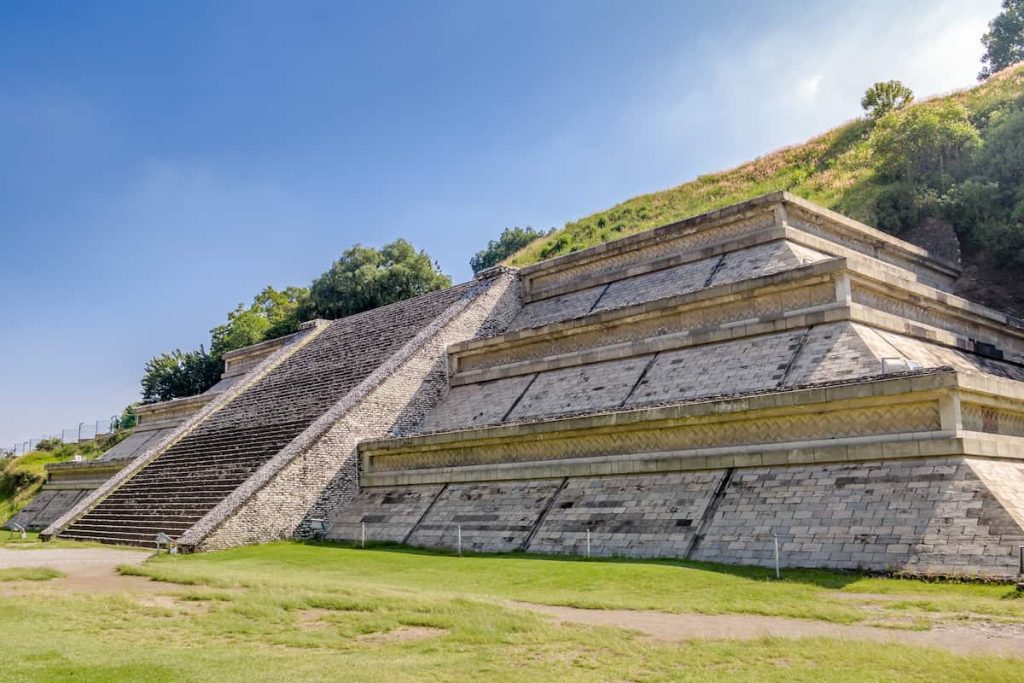
Cholula Pyramid – Cholula, Puebla, Mexico
The pyramid was built up step by step over centuries with the help of vassal tribes of central Mexico – probably starting with the Teotihuacan or the Olmec-Xicallanca peoples and subsequently joined by the Toltecs. It wasn’t conventionally built by each civilization on its grounds – it was built by layers. It was left overgrown with weeds, and in the 16th century, the Spanish colonisers took it for a hill.
Adding on to the drama, Spanish people constructed on top of it a Roman Catholic church called the Iglesia de Nuestra Señora de los Remedios, which was subsequently built. That church still stands, and visitors can admire both the Cholula of the past and the Cholula of the present from this church’s summit.
In contrast to the Pyramids of Egypt, which are sharply defined, the contour of Cholula’s remains more rounded and organic. From a distance, it makes more sense as a sandy dune than as a pyramidal structure. Yet in reality, it is a hill of clay bricks containing passageways and temples. Today’s visitors can explore several tunnels within the pyramid that were excavated to expose different levels of its construction.
Why Is This Pyramid Astounding?
The reason why such a pyramid is even more astounding is that it is far from having been exhaustively studied. According to archaeologists, this site is only one-third undeveloped. The part that people can see is a tiny fraction of the entire system of temples and other buildings that represented the center of Cholula.
The Great Pyramid of Giza is arguably the most famous, but in terms of maximum volume of pyramids, the Cholula pyramid beats all other pyramids. And, this is proof that the building of such superstructures was not repressed only on the Egyptian continent; the American continent has its behemoths, too.
2- Great Pyramid of Giza, Egypt
Location: Giza, Egypt
Height: Originally 146.6 meters (481 feet); now about 138.5 meters (455 feet)
Volume: Approx. 2.5 million cubic meters
Built: Around 2560 BCE
The pyramids of Giza are the most well-known pyramids worldwide due to the enormity of their enormity as well as their beauty. It was a funeral chamber for Pharaoh Cheops, and remains the tallest edifice in the world for about 3800 years. Today, it continues to be the tallest pyramid in Egypt as well as the best-preserved of the 3 pyramids on the Giza plateau.
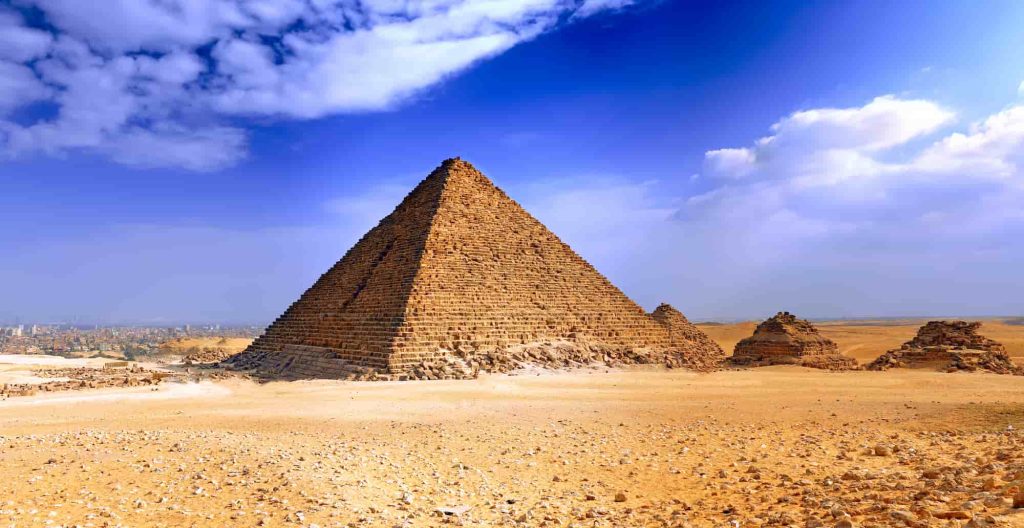
the pyramid of Pharaoh Khufu
Giza lacks the multi-tier construction, which can be found quite expressly in the pyramid of Cholula in Mexico. The Great Pyramid, according to some estimates of the archaeologists, would have taken close to 20 years to build and upwards of 2.3 million blocks of limestone and granite carefully positioned into place, each block ranging from two to fifteen tonnes. The remarkable fact, however, is that despite its age, the bases of the pyramids are still nearly all oriented to the true north direction—remarkably close, a degree or less deviation.
The Giza Pyramid’s Importance
It was not only a building, but also a representation. The pyramids took the shape of the solar rays while transporting the pharaoh’s soul into the heavens. At the core of the structure, there is an arrangement of rooms and corridors, including those of the Chief, Chiefest, and Grand galleries. Alignment and geometry, which are said to have such meanings, are also said to reflect some advanced astronomy that did not exist back then.
Although it is more voluminous than Cholula, for its height and symmetry, the pyramid in Giza has clear supremacy over the former. The surface of this pyramid, as built, was full of polished white tura limestone casing stones, which drew the eyes away by their luster and emanating blinding light in the sun. Hence the name – the Shining Pyramid.
As to the present condition of the Great Pyramid, this pyramid is one of the recognized world heritage sites of UNESCO, and used to have tourism value. Millions of people visit the Pyramid every year, and it plays a very important role in the culture of Egypt and nationalism.
Did you ever question yourself concerning the huge Pyramid of Egypt? This is the appropriate answer. But on the other hand, measured not in height but in historical significance, it still bears the name of the greatest one.
3- Pyramid of Khafre, Egypt
Location: Giza, Egypt
Height: 136.4 meters (448 feet)
Volume: Approx. 2.2 million cubic meters
Built: Around 2520 BCE
Since it was for Khafre, son of Khufu, the Pyramid of Khafre is the second-tallest and second-largest among the pyramids of Giza. Being somewhat shorter than the Great Pyramid, it is and has constantly been believed to be taller. Since it rests on higher ground and retains some of the original limestone casing at the very top, the silhouette in its sharper and perfect form is well clear to the onlookers.
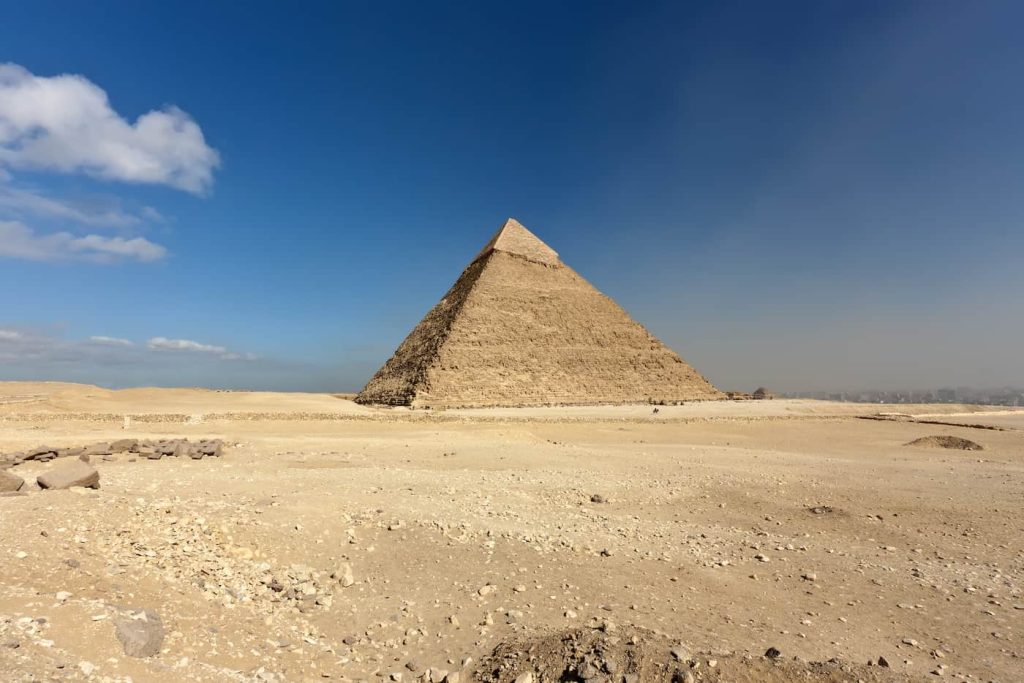
Pyramid of Khafre in Egypt
There are about 2.2 million cubic meters of stone in Khafre’s pyramid by volume, just behind that of his predecessor. The sides rise at an angle of some 53 degrees, and the base measures some 215 meters (706 feet) on each side.
Opposite the Great Sphinx of Giza, directly in front of the causeway of the pyramid, stands the most majestic statuary of the world along Khafre’s pyramid complex. Supposedly, the Sphinx is a representation of Khafre, and the two monuments together bask in the glory of royal power and divine authority in the afterlife.
Whereas it is not the biggest, its huge engineering-framed beauty shows the evolution of planning in building. Against those of Khufu’s pyramid, the temple precincts, the mortuary temple, and the valley temple are all better preserved, providing more for archaeologists and tourists to explore.
How Is The Pyramid’s Interior?
The interior, as with all other Old Kingdom pyramids, is straightforward, having a burial chamber constructed from granite, with corridors angling downward from the entrance. There is no multiplex chamber or more internal complexity, as with Khufu’s pyramid.
If you’re in Giza, Khafre’s pyramid will push its way into your attention, by all means. Being clad near-completely in casing stones, it stands high on a rocky eminence and is just a short walk away from the Sphinx; such features alone speak volumes about the fact that big isn’t all that great when design works magic on perception.
4- Red Pyramid, Egypt
Location: Dahshur, Egypt
Height: 104.4 meters (343 feet)
Volume: Approx. 1.69 million cubic meters
Built: Around 2600 BCE
Having the epithet “red” because of its reddish limestone walls, the North Pyramid meets the tomb of Pharaoh Sneferu at Dahshur, about 40 kilometers south of Cairo. Built by the father of Khufu, it occupies a special place in the annals of pyramid history as being the first proper, successful, smooth-sided pyramid.
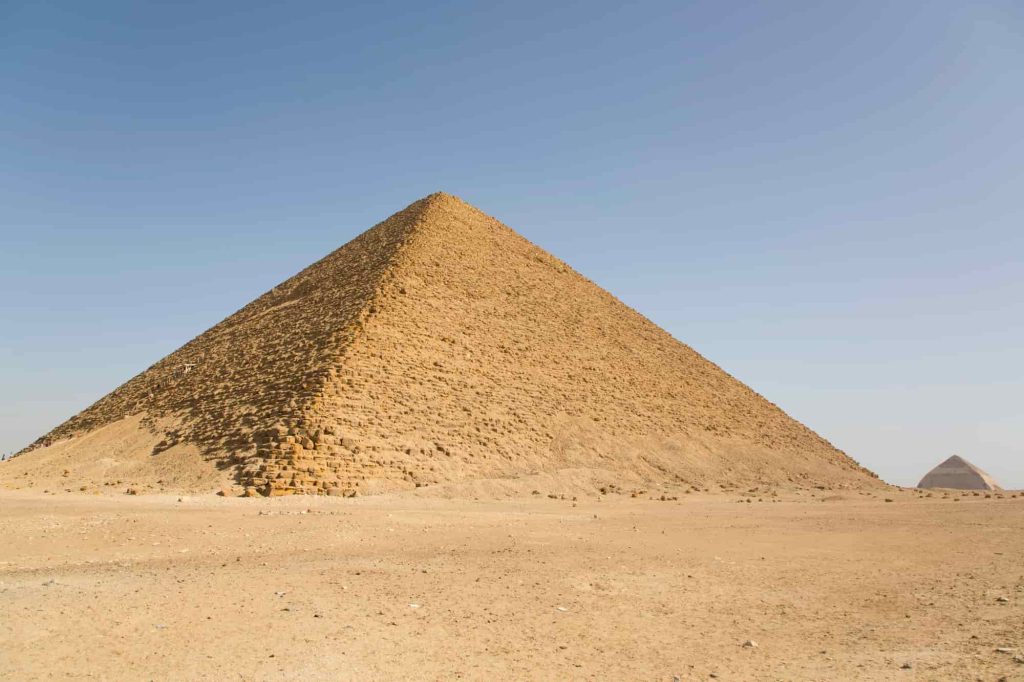
Red Pyramid, with Bent Pyramid
Sneferu had his preliminary experiments with the Bent Pyramid, also at Dahshur, which started steep and turned halfway up to prevent collapse. Somehow, with the Red Pyramid, the architects finally got their proportions right, and through its gentle slope of 43 degrees and well-laid construction, it stood as a stable model for all following pyramids, including that of Khufu at Giza.
The Red Pyramid is much less grand than the Giza Pyramids as it measures 343 feet (104 meters) in height and creates a volume of about 1.69 million cubic meters, thus making it one of the largest pyramids in the world, by both height and size.
Why Was Its Name The Red Pyramid?
The reddish color of the limestone slate is where the name came from. Once upon a time, the red granite was full of polished white casing stones, much like the Great Pyramid. Eventually, came the loots, and the casing stones went off, exposing to view the red interior for all to see.
The interior is accessible to visitors and comprises three large corbelled chambers linked by long, low passages. In the face of over 4,600 years of history, the pyramid has remained quite intact. Visitors can walk along corridors and stand in the main chamber, which is one of the few open to the public in Egypt.
The Red Pyramid is an important step in pyramid design, even if it does not attract the gaze of the Giza pyramids. Plus, this makes it less crowded and easy to visit for those with a further thirst for more silence to observe ancient engineering.
If you are looking for the oldest true pyramid in the world, here it is. And, as they say, in the larger scheme of things, it probably deserves to be ranked among the 10 biggest pyramids in the world.
5- La Danta, El Mirador, Guatemala
Location: El Mirador, Petén, Guatemala
Height: Approx. 72 meters (236 feet)
Volume: Estimated 2.8 million cubic meters
Built: Around 300 BCE
There is a particularly famous pyramid situated deep within the Guatemalan rainforest. This enigmatic archaeological structure is known as the La Danta pyramid, situated within the ruins of El Mirador, a reputed civilization of the Maya. Nonetheless, the adoration of the two temples is short-lived, but La Danta is the largest in all respects. However great and impressive the architecture is, there is always the struggle for the tallest and the biggest.
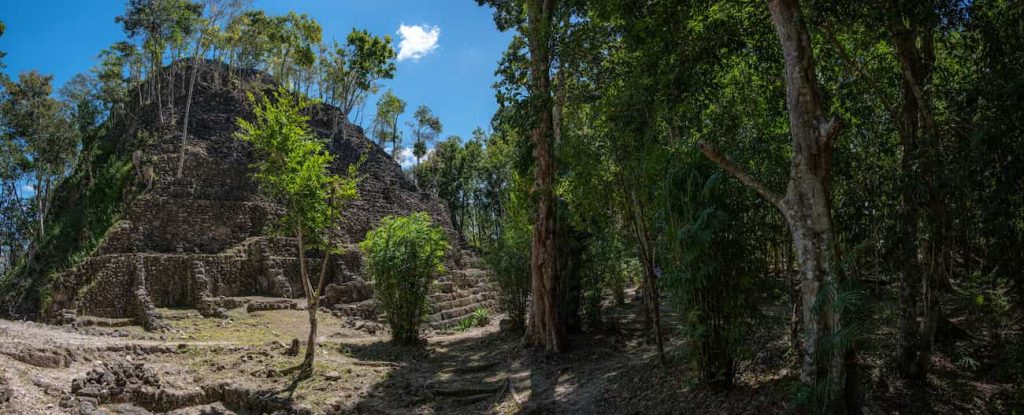
La Danta pyramid
The mentioned height is virtually average – 72 meters, or 236 feet. But it is not the height that makes this pyramid exceptional; it is rather its giant body. Another giant just behind Cholula and Giza in terms of capacity is La Danta, with about 2.8 million cubic meters of stone and earth fill being used in the pyramid. However, this huge artifact can be one of the biggest on the globe.
Was La Danta a Single Pyramid?
It is important to note that La Danta is not one single pyramid but a set of pyramids constructed in steps. There are also hypogeums and arcs, and corridors hidden in this massive structure.
The pyramid existed centrally on the massive platform, which is more than 300,000 square meters in area. The platform itself again serves to dramatically increase the volume of the structure again almost approaching or exceeding that of the lower pyramid. At the summit of La Danta is a centralized temple that is high above the thick, dense tropical canopy.
Constructed during the early Mayan period, La Danta existed before many of the Mayan-like procedures that are more popular even now. According to the researchers, as one idea of how intense the conditions were, hundreds of thousands of hand-carried and hand-laid chunks of earth and limestone were for the construction of the structure. There are claims of having heard no wheel. No pack animal either.
It is not an easy task to get to La Danta. No roads go there, nor is there any airport nearby. Normally, it takes several days and nights of walking or even a helicopter to get there. However, once you do make it to the pyramid field—a destination that draws virtually no crowds and which features a tall, overgrown manmade ruin of epic scale—the experience exceeds all expectations.
What Are The differences between La Danta and the Pyramid of Giza?
There are important distinctions between the pyramids at Giza and La Danta despite both rising steeply towards the sky. In contrast to the funerary products of the Egyptians, La Danta is not located in one of a number of royal tombs. Whoever knows has it that its purpose was religious, involved directions of the stars, and the elite used it in their ceremonies. The perceived prominence of the structure above the tree canopy might have denoted strength or even godly stature, much like most of the pyramids in Giza are.
Among the pyramids of the world that are the biggest in volume, La Danta is far outranked by the rest. This giant structure is an encouraging proof that advanced multi-disciplinary societies in Central America existed thousands of years before they met the Spanish and Portuguese.
6- Pyramid of the Sun, Teotihuacan, Mexico
Location: Teotihuacan, near Mexico City, Mexico
Height: Approx. 65 meters (213 feet)
Volume: Estimated 1.18 million cubic meters
Built: Around 100 CE
The Pyramid of the Sun has remained the most iconic structure of the ancient city of Teotihuacan, one of the biggest and most powerful cities in pre-Columbian Mesoamerica. Considered among the demanding acts of Western Hemisphere pyramids, it remains one of the most visited and visually commanding venues, despite not being the largest in volume or height.
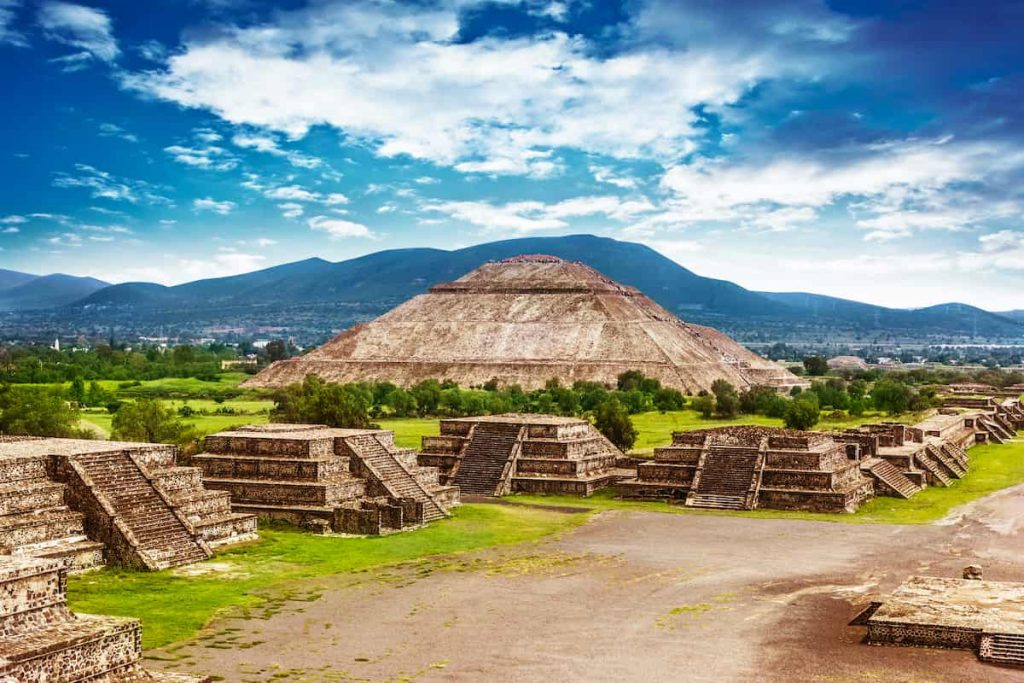
Pyramids of the Sun and Moon on the Avenue of the Dead
With a height of about 65 m (213 ft), it is lower than those in Giza or La Danta. But with a descent on all four sides of the base of about 225 meters (738 feet), it gives the tough calculation of 1.18 million cubic meters. That put it into one of the largest pyramids in the world, especially culturally and historically.
Who built This Pyramid?
There is some mystery as to who built Teotihuacan. The city reached its height from 1 to the 6th centuries CE; with possible housing for 125,000 people, it was one of the largest cities in the world of its time. The very pyramid probably existed by 100 CE, and some evidence perhaps shows it lay dedicated to the solar deity-though with not a stone scratched to tell its tale.
Even today, visitors can still ascend the pyramid via a steep staircase that ends at a baguette flat terrace. So, A climbing thrill that qualifies as one of the most memorable ancient experiences in Mexico. Anyone could see the Pyramid of the Moon, the whole stretch of the Avenue of Death, and the smaller neighbor.
In contrast with Egypt’s pyramids, generally tombs, the Pyramid of the Sun was probably a ceremonial site, maybe even the setting for large-scale public rites aligned with astronomical events. It was thus from a cultural orbit that revealed a more accurate worship of the sun, seasonal changes, and the sacred requirement of rulers to maintain cosmic order.
7- Bent Pyramid, Egypt
Location: Dahshur, Egypt
Height: Approx. 101 meters (331 feet)
Volume: Estimated 1.24 million cubic meters
Built: Around 2600 BCE
The Bent Pyramid, one of the most interesting and important monuments in the history of ancient Egyptian architecture, existed in Dahshur, south of Cairo, and had a relationship with the rule of Pharaoh Sneferu, who also built the Red Pyramid. This earlier effort stands as both a bold architectural aspiration and a critical learning experience.
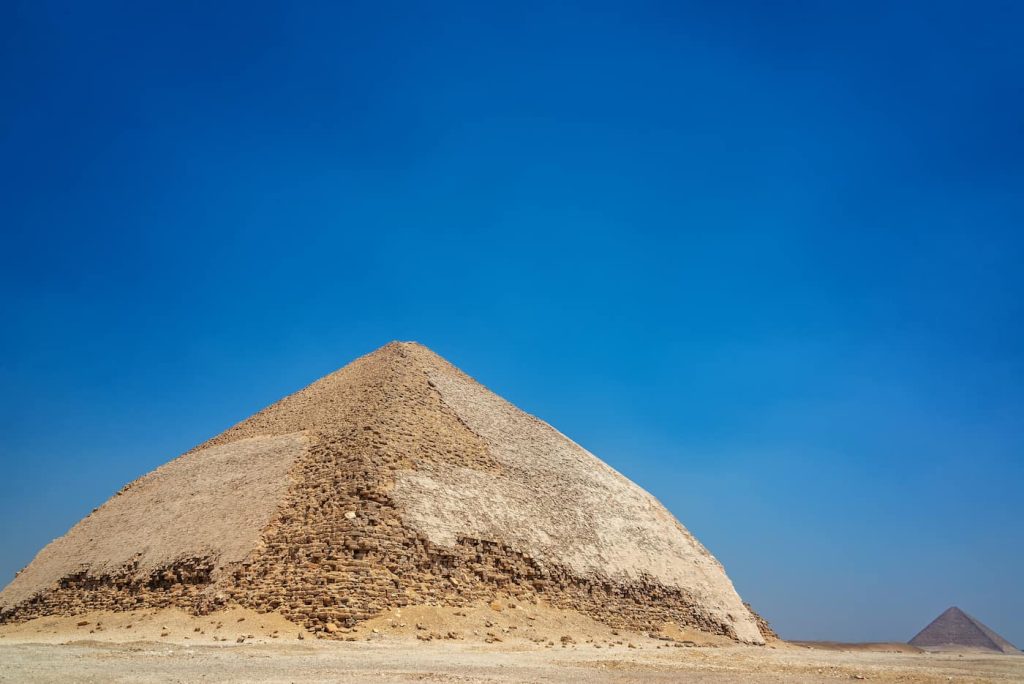
Bent Pyramid
What sets the Bent Pyramid apart is its shape. The structure rises from the ground at a steep angle of 54 degrees for some part and then abruptly changes to a gentler angle of 43 degrees about halfway up. This bent or “kinked” angle was, therefore, the very reason for its name.
What could have caused the change?
The consensus among most scholars is that it was some kind of adjustment during construction. The builders felt that the structure, turned with the original steep angle, could not stand; hence, they flattened the upper half so as to stop it from collapsing. In the process, they created the most distinguishable—and scientific—in Old Kingdom monuments.
Despite its weird structure, the Bent Pyramid is a huge old structure. Being 101 meters tall and with an estimated volume of over 1.2 million cubic meters, it is one of the largest pyramids in the world. It also remains one of the best-preserved, maintaining much of the original smooth limestone casing, thereby giving the visitors a rare sight of how Egyptian pyramids looked in the beginning.
Bent Pyramid is also famous for having a dual entrance system, with passageways from the outside leading into two separate chambers. This sort of internal arrangement is by far rare among Egyptian pyramids and hence adds further to the archaeological value.
While it certainly isn’t the oldest pyramid in the world, it’s certainly among the earliest smooth-sided pyramids and was instrumental in the evolution of the classic pyramid form that was later perfected in Giza. It could be a major turning point in engineering, one that taught future builders their limits and how to transcend them.
Today, seeing the Bent Pyramid offers perhaps the same weight of history, but the site is quieter and less crowded than Giza. It may not have the reputation, but it deserves a solid place in the top ten of the largest pyramids ever constructed.
8- Pyramid of Menkaure, Egypt
Location: Giza, Egypt
Height: Originally 65 meters (213 feet); now about 61 meters (200 feet)
Volume: Approx. 235,000 cubic meters
Built: Around 2510 BCE
It is the smallest of the three primary pyramids on the Giza Plateau, but it somehow still managed to be one of the greatest pyramids in the world. Being an architectural manifestation for the thread of massive royal tombs from which the ancient Egyptian civilization was built, it was a tomb for a pharaoh: Menkaure, the son of Khafre and grandson of Khufu.
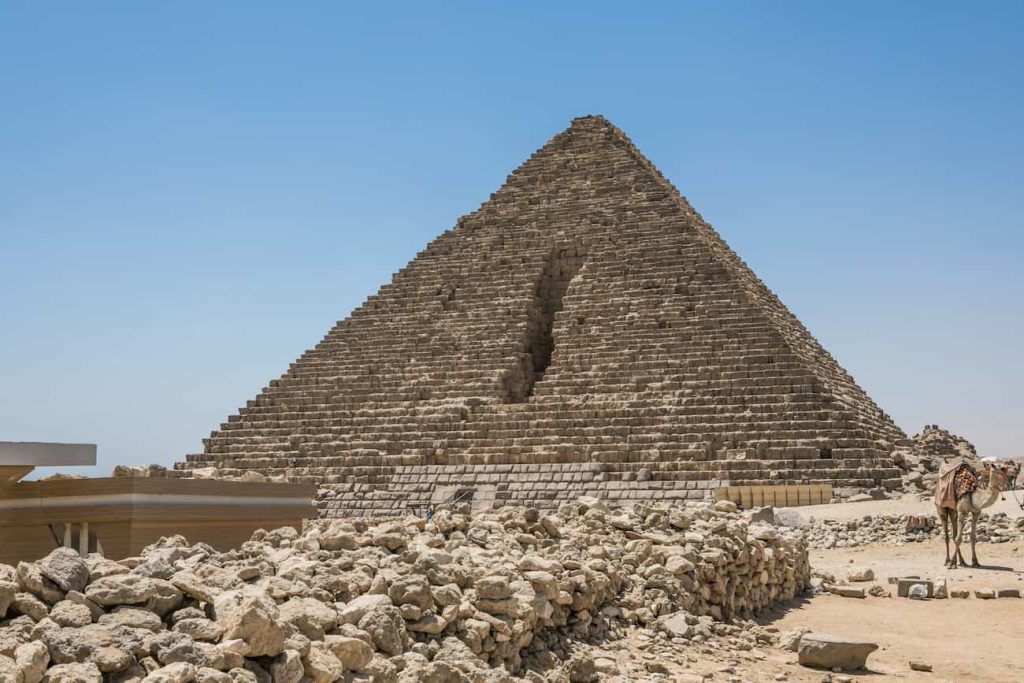 The originally built pyramid, standing 65 meters tall (213 feet), was always shorter in stature than its neighboring gigantean pyramids. Throughout the centuries, it has taken the hits from erosion and damage, and today stands at a height of around 61 meters (200 feet). Just to put this into perspective, while its volume tallies up to a little more than 235,000 cubic meters, the Great Pyramid is of several multiples of this. So building one another of this scale at that time was second to none.
The originally built pyramid, standing 65 meters tall (213 feet), was always shorter in stature than its neighboring gigantean pyramids. Throughout the centuries, it has taken the hits from erosion and damage, and today stands at a height of around 61 meters (200 feet). Just to put this into perspective, while its volume tallies up to a little more than 235,000 cubic meters, the Great Pyramid is of several multiples of this. So building one another of this scale at that time was second to none.
The pyramid of Menkaure, for all its smaller size, is still unparalleled in beauty and craftsmanship. Archaeological findings reveal that the stonework of both the pyramid and its mortuary complex of Menkaure was of a finer quality than that found at Khufu’s or Khafre’s pyramids. Chiefs among these were the lower courses of the pyramid. These courses were clad in red granite, an extremely expensive stone material to import and carve.
Another point of differentiation is that the internal plan is also more complicated. There are several chambers, a deep descending passage, and traces of a pink granite sarcophagus (now lost to the sea), which demonstrate that ideas about afterlife and burial were changing in the late Fourth Dynasty.
Beyond The Pyramid
Beyond the main pyramid, the entire complex of Menkaure’s pyramid consisted of three smaller pyramids dedicated to queens, a mortuary temple, and a valley temple connected by a causeway. While much of it disappeared today, what remains still expresses the scale of funerary buildings during the Old Kingdom era.
Menkaure’s pyramid, though in many ways overshadowed by the two bigger pyramids beside it, cemented the Giza Pyramid complex as a group of edifices by which the Egyptian past is famous. It is mainly an inadvertent testimony that size never defines importance. The smallest pyramid at Giza was one of the greatest endeavors in ancient history.
9- Memphis Pyramid (Bass Pro Shops) USA
Location: Memphis, Tennessee, USA
Height: 98 meters (321 feet)
Volume: Approx. 590,000 cubic meters
Built: Completed in 1991
Quite interesting is the fact that the Memphis Pyramid is one of the largest pyramids in the US. At a height of 98 meters (321 feet) and with a volume of more than 590,000 cubic meters, it stands as the tallest contemporary pyramid and a spectacular sight on the corpse of the Mississippi River. It goes without a doubt that this one houses a massive Bass Pro Shops.
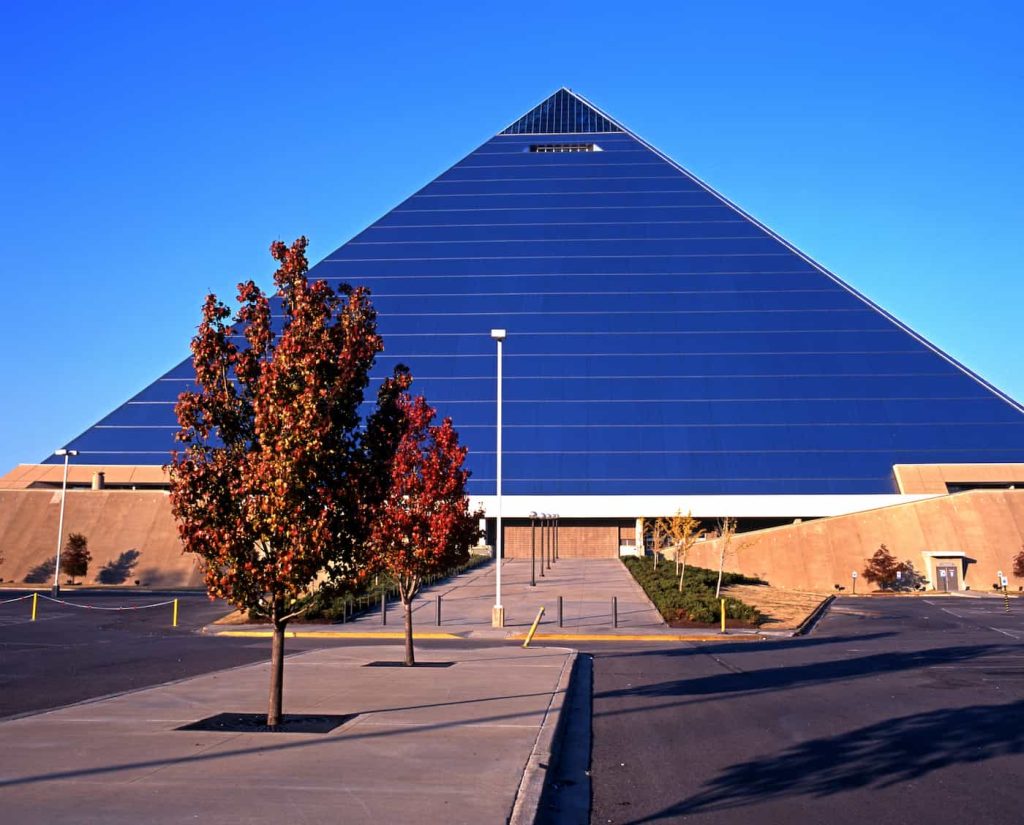
The Memphis Pyramid, opened in 1991, was yet another basketball arena and sports and entertainment spot before its new guise as a Bass Pro Shops megastore. It hosted all manner of basketball games, concerts, and even heavyweight title fights between Mike Tyson and Lennox Lewis in 2002. Accommodating up to 20,000 spectators, it was probably a cultural landmark, bridging Memphis with its ancient namesake in Egypt.
After the hall started falling into disuse in the early 2000s, Egyptians redesigned and reopened it in 2015 as an all-purpose facility. Today, it houses a 535,000-square-foot Bass Pro Shops, an indoor swamp, bowling, eateries, archery and shooting ranges, the wilderness-themed Big Cypress Lodge, and even a whopping 28-story freestanding glass elevator leading to an observation deck at the very top.
Why Is This Pyramid Fascinating?
What makes the pyramid fascinating is that it makes a certain deliberate nod towards Egyptian building style. The mirrored glass sides lend it a certain futuristic flair; on the other hand, the ratio of its dimensions and the name given to it tie directly to the ancient world. It is a testimony to how the pyramid form and aspiration still resonate across time within various cultures and for many purposes.
Though it may not be for honoring the dead or tracking the movement of the stars, it continues on the list due to its great scale. It is an everlasting reminder that pyramid building did not cease in antiquity. This structure still carries the inspiration of people, design-wise, be it for religious rites, kingship, or retail sale.
10- Nubian Pyramids, Sudan
Location: Meroë and other sites in Sudan
Height: Typically 6–30 meters (20–100 feet)
Volume: Varies by structure; smaller than Egyptian pyramids
Built: Between 700 BCE and 300 CE
Even smaller in size, the pyramids of Sudan are among the largest and most culturally significant pyramid groups in the world. Known as Kushite pyramids, they existed over several sites, the most famous being Meroë, Nuri, and El-Kurru, of which the total number exceeds 200.
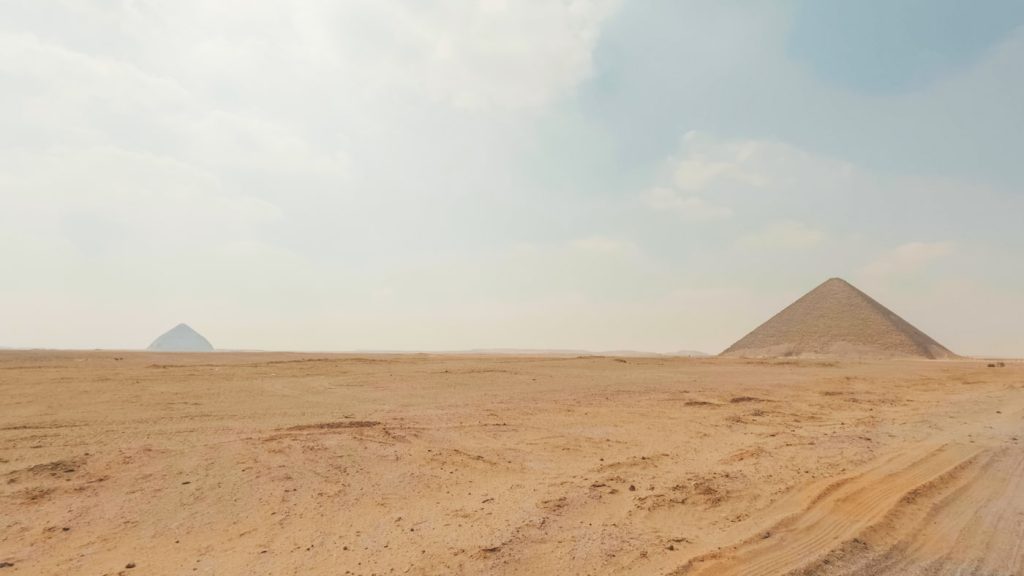 Used as burial pits for kings, queens, and esteemed individuals of Kushite dynasties, very amenable to the culture of ancient Egypt. These pyramids are both a tribute to Egyptian architecture and, in some respects, a clear departure from the Nubian form. They tend to have slightly steeper angles, with 65 to 70 degrees being deemed normal, while they are much narrower and far taller in proportion to the base size.
Used as burial pits for kings, queens, and esteemed individuals of Kushite dynasties, very amenable to the culture of ancient Egypt. These pyramids are both a tribute to Egyptian architecture and, in some respects, a clear departure from the Nubian form. They tend to have slightly steeper angles, with 65 to 70 degrees being deemed normal, while they are much narrower and far taller in proportion to the base size.
Nubian Pyramids’ Size
Nubian pyramids largely range between 20 and 100 feet tall (6 to 30 meters), hence quite short when compared to the Giza pyramids. But what they lack in height, they make up for in number and time reached. These pyramids were through 1,000 period after monumental pyramid construction had ceased in Egypt.
Some of the most spectacular ones existed around Meroë, a UNESCO World Heritage Site lying northeast of Khartoum. Here one can behold dozens of pyramids neatly clustered on desert ridges. Many have been partially restored, while some bear inscriptions and wall reliefs that record the Kushite funerary customs and royal tenets.
So many of the Nubian pyramids grew out of local sandstones and mud bricks,” weak materials prone to erosion and looting, as against their widely heavy Egyptian cousins. Still, their pointed profiles shoot up through the orange-and-yellow of the Sudanese desert.
A few pyramids that can compete for pride of place in the largest pyramids of the world in volume or height, and cumulatively. They represent one of the truly significant pyramid-building cultures of the ancient world. They also serve to destroy the myth that extraordinary pyramid building was solely the Egyptian domain.
Other Remarkable Pyramids Around the World
1- Step Pyramid of Djoser, Egypt
Location: Saqqara, Egypt
Height: Originally ~62 meters (203 feet)
Built: Around 2630 BCE
Often called the oldest pyramid in existence, the architect Imhotep conceived the Step Pyramid, to my knowledge, for Pharaoh Djoser. It is not a true pyramid, geometrically speaking. It is inside mastabas stacked one on but it is the onset of monumental stone architecture in Egypt. Without this innovation, the pyramids of Giza might never have come into existence.
2- Pyramid of the Moon, Teotihuacan, Mexico
Location: Teotihuacan, near Mexico City
Height: ~43 meters (141 feet)
Built between 100–450 CE, the Pyramid of the Moon is located at the end of the Avenue of the Dead and is smaller and thus lower in importance than the somewhat larger Pyramid of the Sun to its south; however, it was no less worthy of worship. It was a place for the performance of religious rites and human sacrifices and is thus closely tied to Teotihuacan’s urban and ceremonial layout.
3- Monte Albán Pyramids, Mexico
Location: Oaxaca Valley, Mexico
Built: 500 BCE – 500 CE
More like massive platforms than pointed structures, these pyramids housed the Zapotecs’ ritual lives. This layout of Monte Albán as a mountaintop city shows how different cultures interpreted pyramid forms based on local needs and terrain.
4- Tikal Temple IV, Guatemala
Location: Tikal, Guatemala
Height: 70 meters (230 feet)
Built: Around 740 CE
This Mayan temple pyramid is
one of the tallest structures from the ancient Americas. Unlike the broader pyramids like that of Cholula, temples at Tikal were steep and nearly vertical. They were also used to a great extent for ceremonies of the elite or astronomical alignment.
5- Pyramid of Cestius, Rome, Italy
Location: Rome, Italy
Height: 27 meters (89 feet)
Built: Around 12 BCE
Egyptians built this tomb in a Roman manner on pyramid lines for Gaius Cestius, who was a magistrate. It shows how the form of the pyramid was borrowed for symbolism and status even beyond Africa and the Americas.
Why Did So Many Civilizations Build Pyramids?
Classical in form and generous in spirit, the pyramids are no exception to such a wide range. Thus, they have been changed and appeared as such high monuments of this kind.
Where did this incredible resemblance stem from?
1- Engineering
It is one of the most stable structures one can make out of stone, brick, or earth. It is stable because of a wide base tapering towards a thin top-it needs no other type of support whatsoever. This basic stability factor could well be responsible for the inability to bring down many ancient pyramids. They have had the wrath of nature falling on them over thousands of years in the form of erosion, earthquakes, and human interventions.
2- Symbolism and Belief
Wherever it may be, in the ancient world, the pyramid shape was a sacred geometry that opened up to the heavens. The Egyptians held that the pyramid stood for sunbeams and aided the transformation of the pharaoh’s soul into the afterlife. The Maya and Aztecs set up pyramids as temples in the open air, with alignments often dependent on celestial occasions such as solstices or eclipses. The two configurations-the upward-reaching structure-are therefore natural symbols of the link between earth and the divine.
Conclusion
Pyramids-from the sandy Egyptian desert to the thick jungle lands of Central America-from the tomb parchments of yesteryears to the generic megastores of the times-always manage to keep the interest of man. So, by whatever criteria of height, volume, age, or cultural impact, these structures are classified. Each of these named structures tells a story-not just of architecture but also of aspiration, belief, and the legacy of mankind.
Being perhaps the heaviest in terms of mass and substance, the Great Pyramid of Cholula still relinquishes any glory to Egypt’s towering monuments and the sacred Mesoamerican temples. The Memphis Pyramid, while the odd one out of the 20th century, in some ways testifies to the pertinence this iconic shape still holds.

